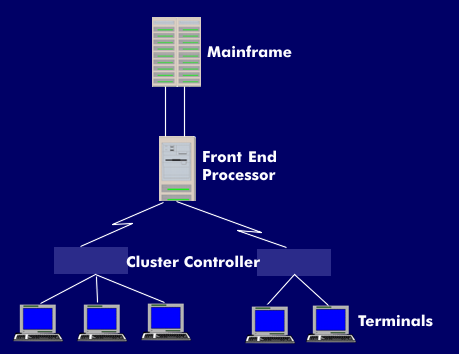terminal network
A terminal network is a centrally controlled network. It consists of a central computer, the mainframe, the front-end processor and the cluster controllers, the terminals connected in a star configuration, and the transmission-related components connecting them, such as transmission equipment, switches, networks, etc.
The IBM philosophy in the early years was to collect the input data from several "dumb" terminals in a cluster controller and send it on a more or less long line to a mainframe. The mainframe was preceded by another computer that took care of collecting the data and later distributing the work results, the front-end processor( FEP). The classic SNA architecture with IBM 3270 had a transmission speed of 2.35 Mbps. In the 3270 terminal network, the terminals are connected to the cluster controllers in a star configuration via coaxial cables. The coaxial cable used is RG-62 cable with an impedance of 93 ohms. The maximum connection length between terminal and Cluster Controller is up to 1,500 m.
A terminal network is not a real data network by design, since there was no direct communication between the domains. If there were any connections to neighboring domains at all, it was at the front-end processor level.

